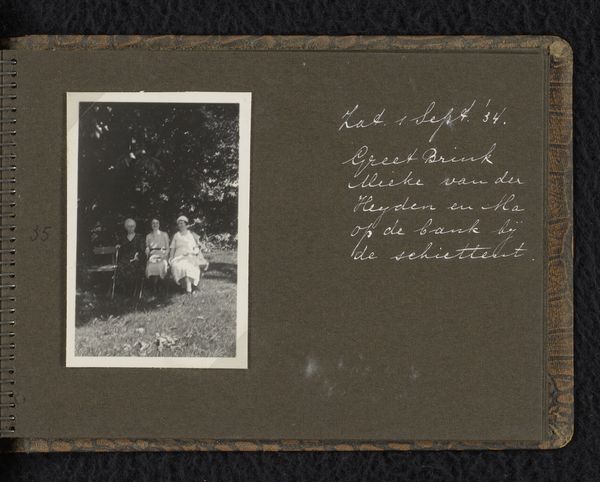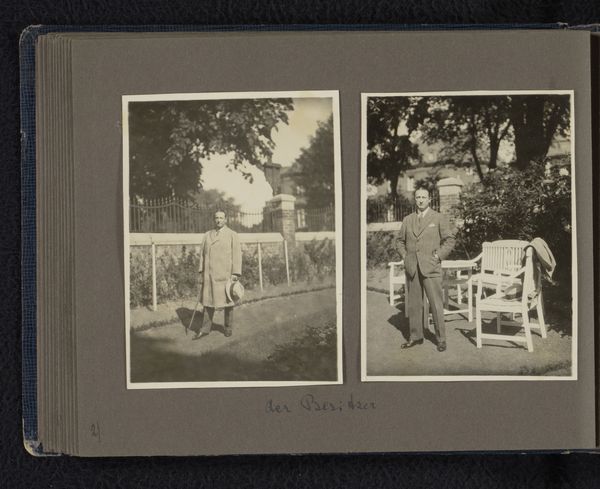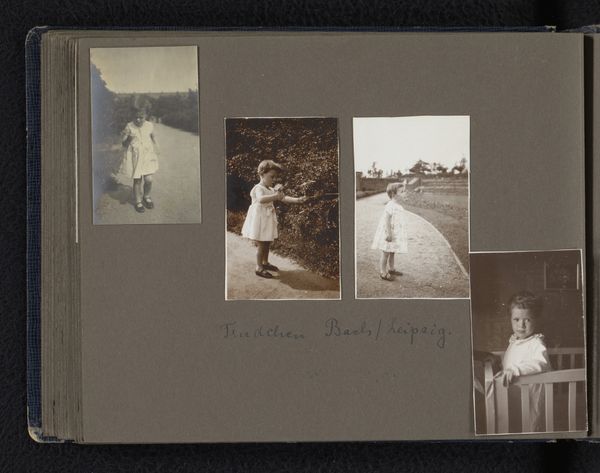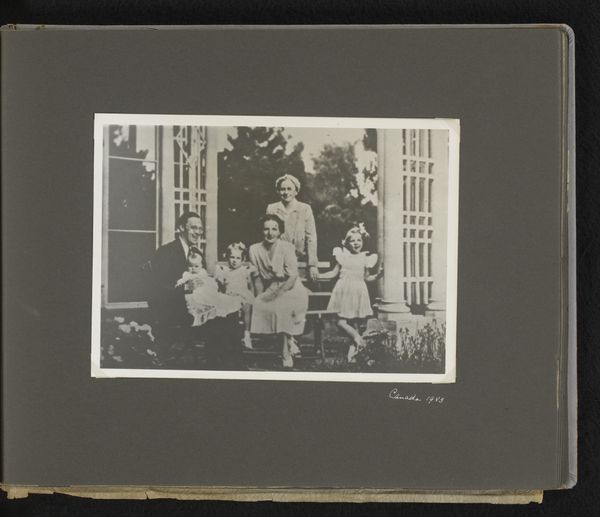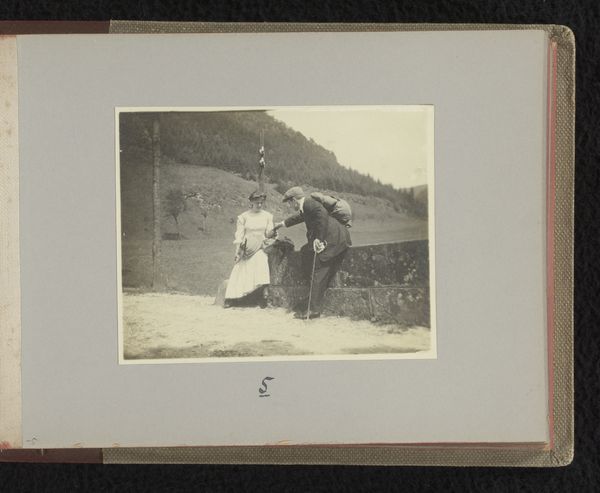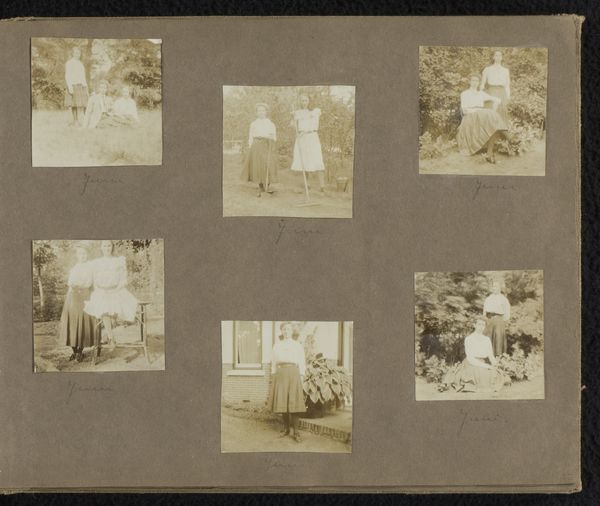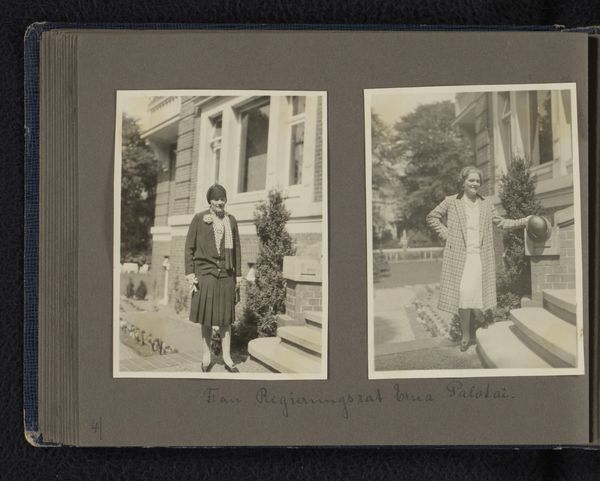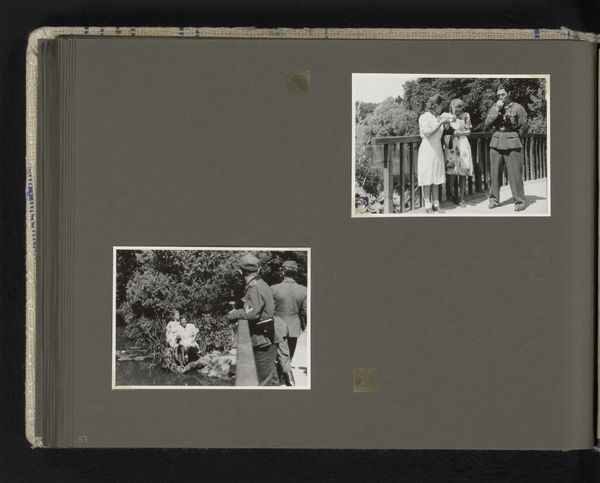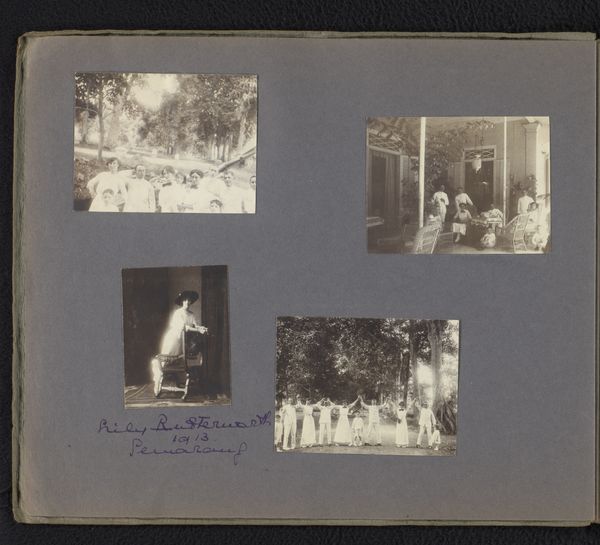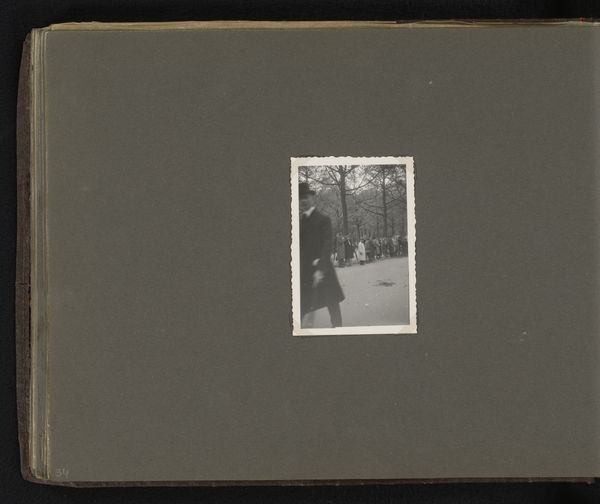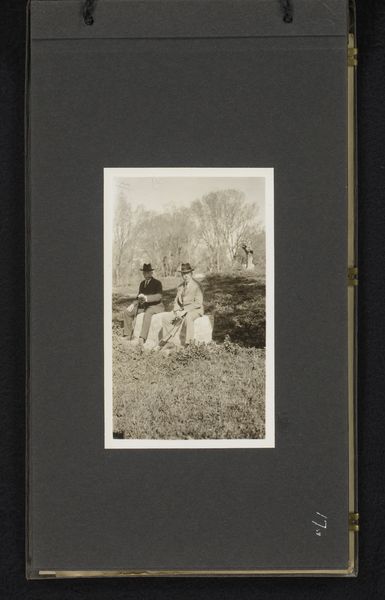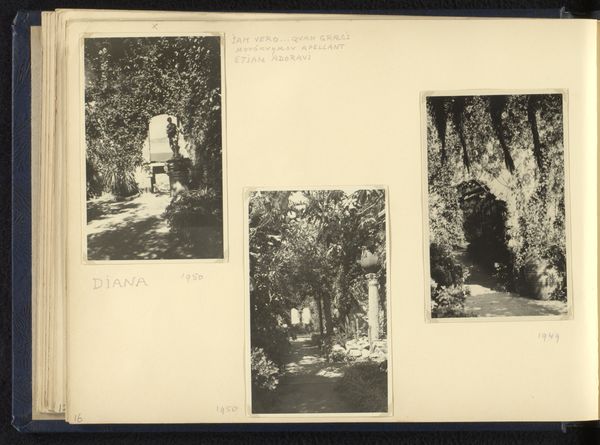
Hede in de tuin met een vrouw die is aangeduid als Mutter (moeder), mogelijk Josefine Moos-Levi of Mathilde Wachenheimer-Wertheimer op latere leeftijd, vermoedelijk 1928, Stuttgart of Hamburg 1928
0:00
0:00
photography, gelatin-silver-print
#
landscape
#
photography
#
gelatin-silver-print
Dimensions: height 85 mm, width 60 mm, height 164 mm, width 210 mm
Copyright: Rijks Museum: Open Domain
Editor: So, this photograph, "Hede in de tuin met een vrouw die is aangeduid als Mutter," dates to 1928. It's a gelatin silver print of what appears to be a mother and daughter, perhaps in Stuttgart or Hamburg. It’s a surprisingly intimate family portrait. What feelings or associations does it bring up for you? Curator: The photographic image, while appearing simple, whispers volumes about memory and cultural inheritance. The figure identified as "Mutter" carries a weight of symbolic representation - the archetype of motherhood itself. Notice the garden, too: enclosed, almost protective. Gardens have long served as symbols of paradise, safety, but also, perhaps, of restriction. What could that signify, placed against the backdrop of interwar Germany? Editor: I see what you mean. The garden setting, with its sense of both enclosure and nurture, creates an interesting tension. I’m also curious about the gelatin silver print process, the tones… Curator: Yes, the medium itself becomes a symbol. Gelatin silver prints were common, offering a seemingly objective rendering of reality. But photography is never truly objective. Here, the choice of medium speaks to a desire for clarity, documentation even, in a time of great social upheaval. Is it trying to hold onto something stable? A fleeting moment of normalcy amid the storm? Editor: So, the photograph acts almost as a historical marker. And this particular choice of rendering, this visual "language," is crucial to how we read it today. The act of identification, the caption beneath: those elements highlight the personal within this historical moment, almost in defiance. Curator: Exactly. These are fragments of stories. Images are traces. We are left to assemble their meaning in the present. Editor: It really makes you think about the layers of meaning within what initially seemed like a straightforward family portrait. Curator: Indeed. Art provides a continuous record to view the past. It's like opening up old photo albums from someone else’s past.
Comments
No comments
Be the first to comment and join the conversation on the ultimate creative platform.
